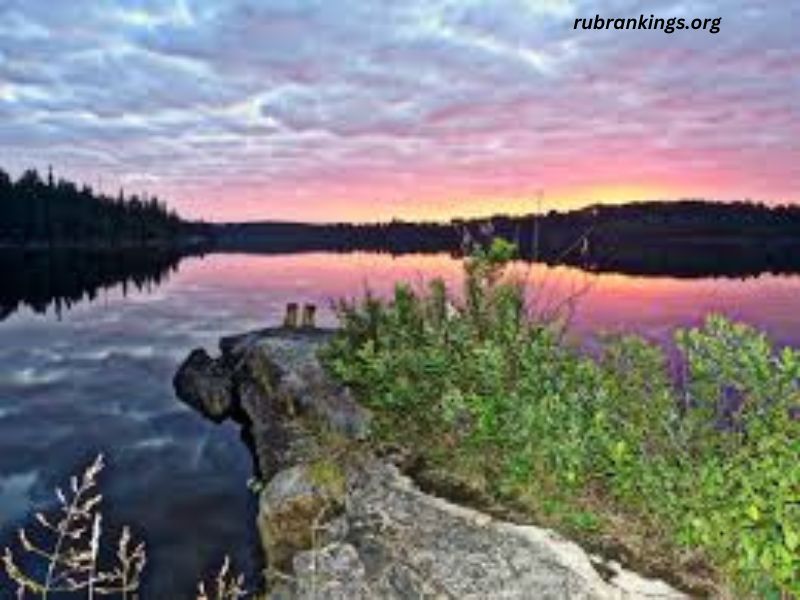The Boundary Waters Canoe Area Wilderness (BWCAW) is a dream destination for adventurers and nature lovers. This sprawling wilderness, located in northeastern Minnesota, offers pristine lakes, rugged landscapes, and abundant wildlife, making it a perfect location for capturing breathtaking video footage. However, to ensure your memories are preserved in the best possible quality, you need a video camera tailored to the unique challenges of this environment.
In this guide, we’ll explore the essential features, top recommendations, and tips for choosing the best video camera for Boundary Waters.
Why Choosing the Right Video Camera Matters
The Boundary Waters present unique filming conditions, including:
- Water Exposure: Canoeing and water-based activities increase the risk of splashes and submersion.
- Variable Lighting: Dense forest canopy and open water create shifting light conditions.
- Portability: Portaging requires lightweight and compact gear.
- Durability: The rugged environment demands equipment that can handle impacts, moisture, and dirt.
Features to Look for in a Video Camera for Boundary Waters
To capture high-quality footage in the Boundary Waters, consider the following features:
1. Waterproof and Weatherproof Design
Since you’ll be near water constantly, a waterproof camera is essential. Look for models rated IP68 or higher to ensure they can withstand splashes, rain, and even brief submersion.
2. Lightweight and Compact Build
Portages between lakes mean every ounce matters. Opt for a camera that is small and lightweight but doesn’t compromise on quality.
3. High Video Resolution
Capturing the stunning landscapes of the Boundary Waters requires at least 4K resolution. This ensures your videos have vibrant colors and sharp details.
4. Excellent Battery Life
Wilderness trips often last several days, so a camera with a long battery life or the ability to swap batteries is vital. Solar chargers or power banks can also be helpful.
5. Stabilization Technology
Filming from a canoe can be tricky. Optical or electronic stabilization ensures your videos are smooth and professional-looking, even on choppy waters.
6. Low-Light Performance
The Boundary Waters’ dense forests and early mornings require a camera that performs well in low-light conditions.
7. External Storage Support
Filming in 4K takes up significant storage. Choose a camera that supports high-capacity SD cards to avoid running out of space.
Top Video Camera Recommendations for Boundary Waters
Here are some of the best video cameras suited for your Boundary Waters adventure:
1. GoPro Hero 12 Black
- Why It’s Great: Compact, waterproof up to 33 feet, and robust stabilization.
- Key Features: 5.3K video resolution, HyperSmooth stabilization, and rugged design.
- Ideal For: Canoeing, underwater shots, and adventure filming.
- Price Range: $400–$500.
2. DJI Osmo Action 4
- Why It’s Great: Known for its excellent color accuracy and durable build.
- Key Features: Dual screens, 4K resolution, and waterproof without a case.
- Ideal For: Vlogging and scenic shots.
- Price Range: $300–$400.
3. Sony RX0 II
- Why It’s Great: A compact camera with pro-level features.
- Key Features: 4K video, rugged and waterproof up to 33 feet, and excellent image quality.
- Ideal For: Filmmakers who need advanced controls.
- Price Range: $700–$800.
4. Panasonic Lumix G85
- Why It’s Great: Offers a balance of size, quality, and versatility.
- Key Features: 4K recording, weather-sealed body, and image stabilization.
- Ideal For: Enthusiasts who want a hybrid photo and video camera.
- Price Range: $800–$1,000.
5. Insta360 ONE RS
- Why It’s Great: Modular design allows for versatility in capturing footage.
- Key Features: 360-degree video, waterproof build, and 5.7K resolution.
- Ideal For: Creative shots and immersive experiences.
- Price Range: $500–$600.
Accessories to Enhance Your Video Camera Experience
To get the most out of your video camera in the Boundary Waters, consider these essential accessories:
- Dry Bag or Waterproof Case: Protects your camera during portages and unexpected rain.
- Floating Grip or Strap: Ensures your camera doesn’t sink if dropped in the water.
- Extra Batteries: Crucial for multi-day trips without charging facilities.
- High-Capacity SD Cards: Opt for UHS-I or UHS-II cards with at least 64GB capacity.
- Tripod or Mounts: Helps stabilize your shots during stationary filming or time-lapses.
- Lens Filters: Polarizing filters reduce glare from water and enhance color saturation.
Tips for Filming in the Boundary Waters
Capturing high-quality footage in the Boundary Waters requires some preparation and technique. Here are tips to help you make the most of your camera:
1. Plan Your Shots
Scout the area and identify the best times and angles for filming. Early morning and late afternoon offer beautiful lighting.
2. Keep Your Gear Organized
Use labeled compartments in your dry bag to store accessories, batteries, and SD cards.
3. Practice Smooth Movements
When filming from a canoe, use slow and steady motions to avoid jerky footage. Utilize stabilization features on your camera.
4. Protect Against the Elements
Always keep a microfiber cloth handy to wipe water droplets or dirt off the lens.
5. Capture Wildlife Responsibly
Maintain a safe distance from animals and avoid disturbing their habitat. Use a camera with zoom capabilities for close-up shots.
6. Shoot in Short Clips
Short clips are easier to manage during editing and reduce the risk of missing key moments due to battery or storage issues.
Editing and Sharing Your Boundary Waters Adventure
After your trip, enhance your footage by editing it into a cohesive story. Software like Adobe Premiere Pro, Final Cut Pro, or DaVinci Resolve offers powerful tools for color correction, stabilization, and adding music or text.
Consider sharing your adventure on platforms like YouTube, Vimeo, or Instagram to inspire others to explore the Boundary Waters responsibly.
Conclusion
Choosing the best video camera for Boundary Waters ensures you capture the beauty of this wilderness in all its glory. Whether you’re filming the serene waters, majestic wildlife, or the camaraderie of your canoeing crew, the right equipment makes all the difference. Prioritize waterproofing, portability, and high video quality to ensure your memories last a lifetime. With the tips and recommendations in this guide, you’re well-equipped to document an unforgettable adventure.
So, pack your gear, plan your route, and get ready to create cinematic memories in the Boundary Waters!



